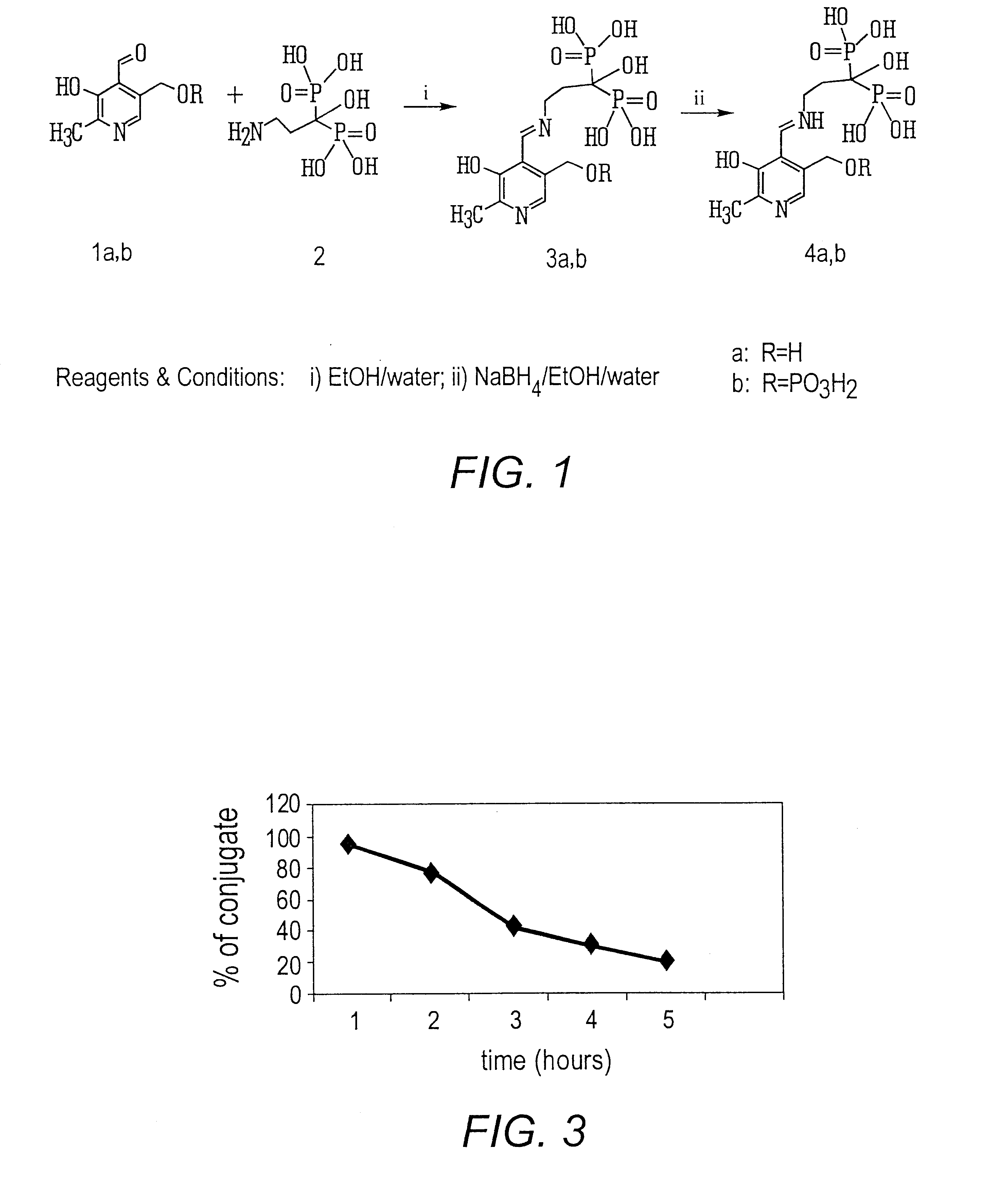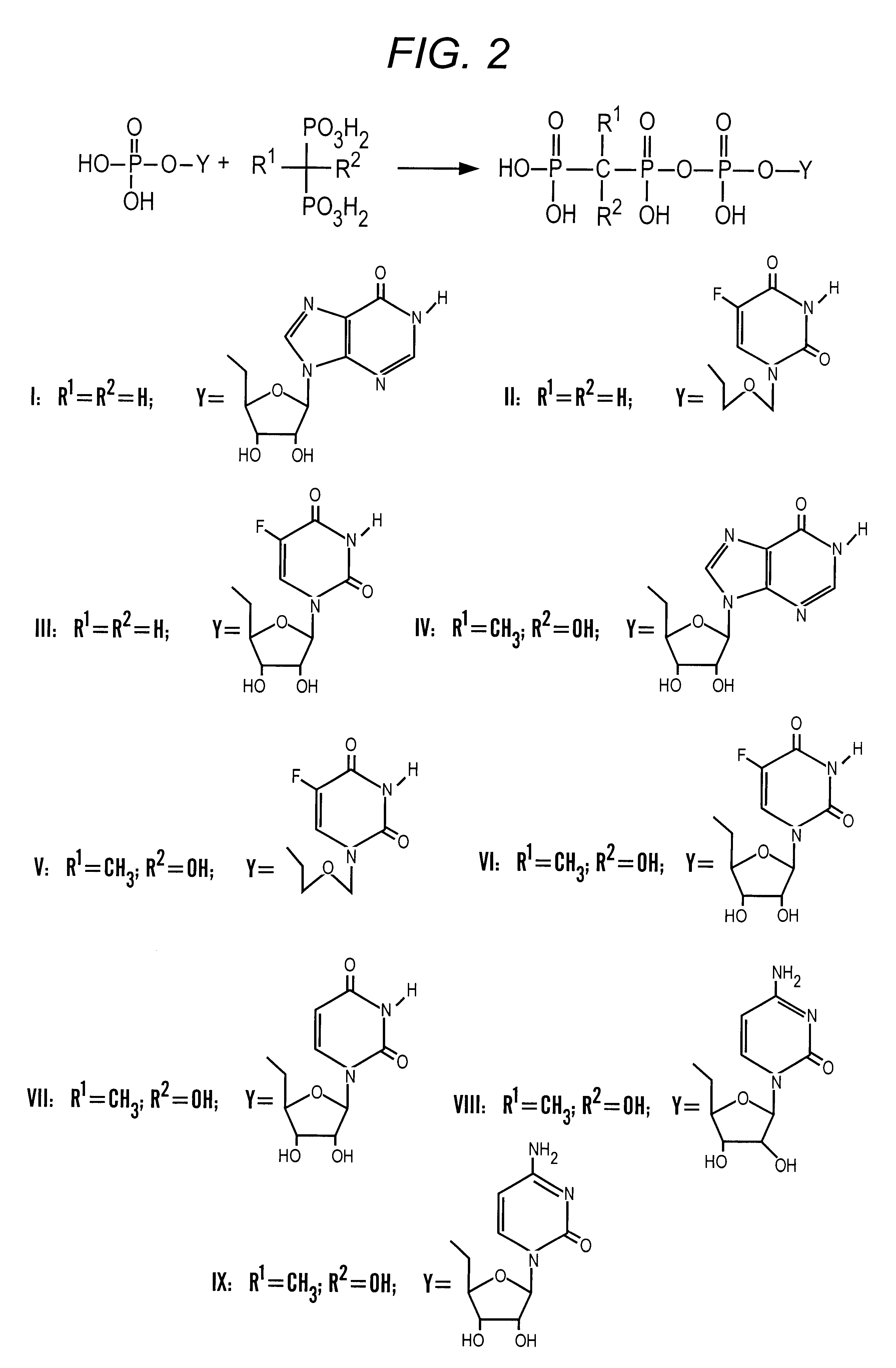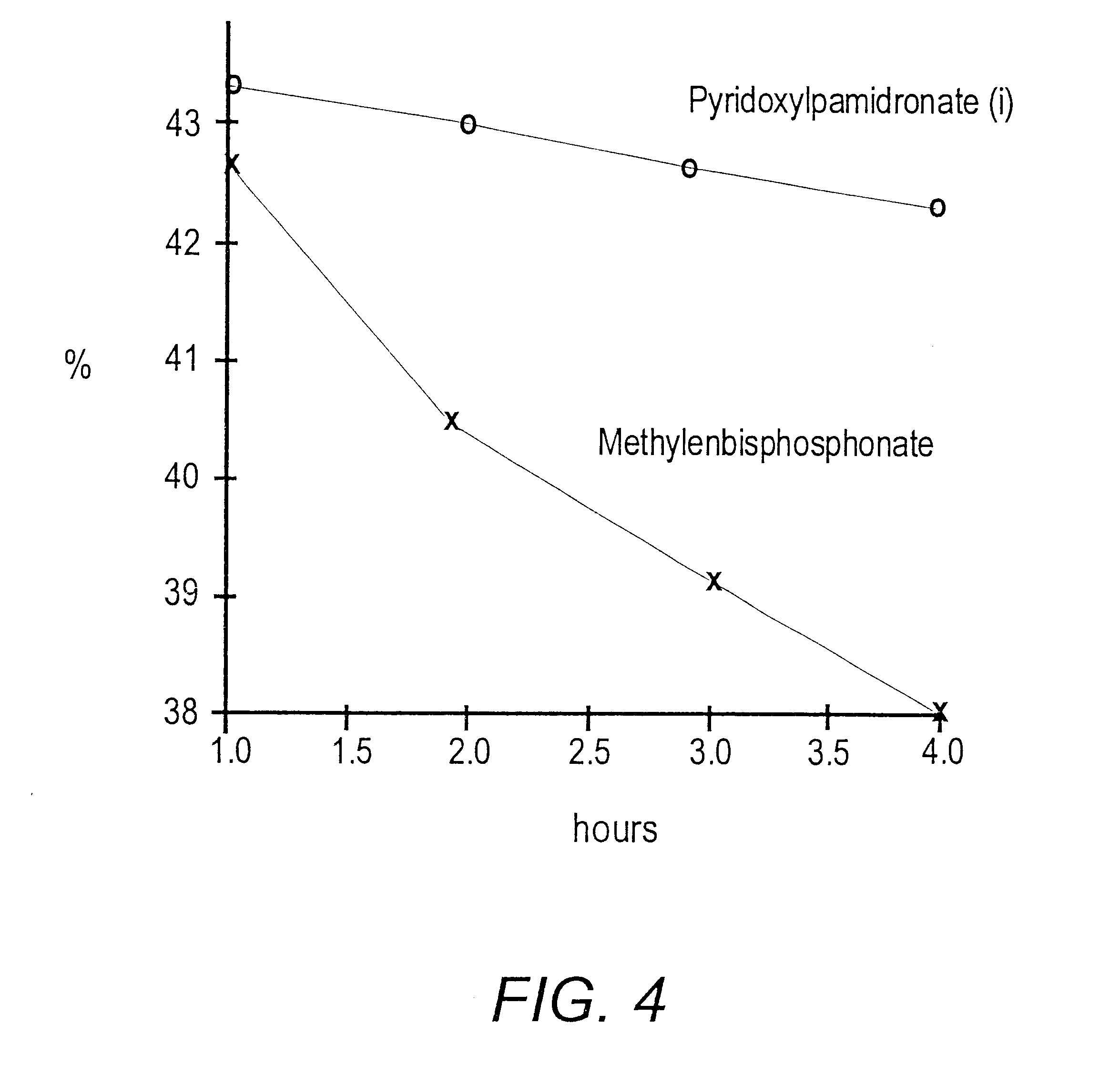Biphosphonate conjugates and methods of making and using the same
- Summary
- Abstract
- Description
- Claims
- Application Information
AI Technical Summary
Benefits of technology
Problems solved by technology
Method used
Image
Examples
example 1
Synthesis of 3-amino-1-hydroxypropyliden-1,1-bisphosphonic acid
[0048]To a mixture of 12.3 g (0.15 mol) phosphoric acid, 8.9 g(0.9 mol) beta-aminopropionic acid and 50 ml chlorobenzene 33.0 g (0.24 mol) PC13 was added by dropping under stirring at 100° C. The two-layer mixture was heated at 105-110° C. for 2 h. Under those conditions the bottom layer became thick and finally became solid. The reaction mixture was cooled down to 60-65° C. At this temperature 20 ml of water was added drop by drop. The layers were stirred for 15 min., cooled down to room temperature and then they were separated. The bottom aqueous layer was filtered through paper filter. To the solution was added to 100 ml isopropanol drop by drop (60-65° C.) under stirring. The warm solution was filtered and 100 ml of ethanol was added. After 12 hours at room temperature, a precipitate was filtered off generating a yield of 12.7 g (62%) m.p. 232-234° C. To obtain a homogeneous product the solid material was boiled with...
example 2
Synthesis of 3-(N-pyridoxylamino)-1-hydroxypropylidene-1,1-bisphosphonic acid
[0049]To the solution of 189 mg (1 mmol) 3-amino-1-hydroxypropylidene-1,1-bisphosphonic acid in water (1 ml), triethylamine (0.9 ml) and ethanol (9 ml), pyridoxal hydrochloride (408 mg, 2 mmol) was added. The reaction mixture was stirred 1 h. at room temperature. Then the pH of a solution was adjusted to 3 with 6 N HCl. Ethanol was evaporated and the pH of the solution was adjusted to 7 with NH4OH. The solution was applied to a Dowex-50(H+) column (20 ml). The column was washed with water and the product was eluted with 2.5% NH4OH. The solution was evaporated to a small volume, the residue was dissolved in water (100 ml) and applied to a DEAE-cellulose column (HCO3− form). The column was washed with water (200 ml) and then eluted with the use of a linear gradient NH4HCO3 (0.05-0.3 M). The peak eluate was evaporated and the residue coevaporated with water (5×10 ml). Lyophilization of the aqueous solution aff...
example 3
Synthesis of 3-(N-[5′-phospho]pyridoxylamino)-1-hydroxypropyliden-1,1-bisphosphonic acid
[0051]To the solution of 189 mg (1 mmol) 3-amino-1-hydroxy-propylidene-1,1-bisphosphonic acid in water (0.5 ml), triethylamine (0.6 ml) and ethanol (2 ml), pyridoxal-5′-phosphate (265 mg, 1 mmol) was added under stirring. The reaction mixture was stirred one (1) 1 h. at room temperature, then NaBH4 (38 mg, 1 mmol) was added. The solution was stirred 1 h. at room temperature. To the solution 6 N HCl (0.9 ml) was added. Ethanol was evaporated and the pH of the solution was adjusted to pH 7 with NH4OH and chromatographed on DEAE-cellulose (HCO3, 100 ml). The column was washed with water (200 ml) and then eluted with the use of a linear gradient NH4HCO3 (0.05-0.3M). The peak eluate was evaporated and the residue coevaporated with water (5×10 ml). Lyophilization of the aqueous solution afforded ammonium salt. Yield 236 mg, 44% Rf 0.05 (B); Rf 0.19 (C); Rf 0.1(D); Rf 0.03(E); Rf 0.32 (F);
[0052]1H NMR (...
PUM
| Property | Measurement | Unit |
|---|---|---|
| Fraction | aaaaa | aaaaa |
| Fraction | aaaaa | aaaaa |
| Fraction | aaaaa | aaaaa |
Abstract
Description
Claims
Application Information
 Login to View More
Login to View More - R&D
- Intellectual Property
- Life Sciences
- Materials
- Tech Scout
- Unparalleled Data Quality
- Higher Quality Content
- 60% Fewer Hallucinations
Browse by: Latest US Patents, China's latest patents, Technical Efficacy Thesaurus, Application Domain, Technology Topic, Popular Technical Reports.
© 2025 PatSnap. All rights reserved.Legal|Privacy policy|Modern Slavery Act Transparency Statement|Sitemap|About US| Contact US: help@patsnap.com



